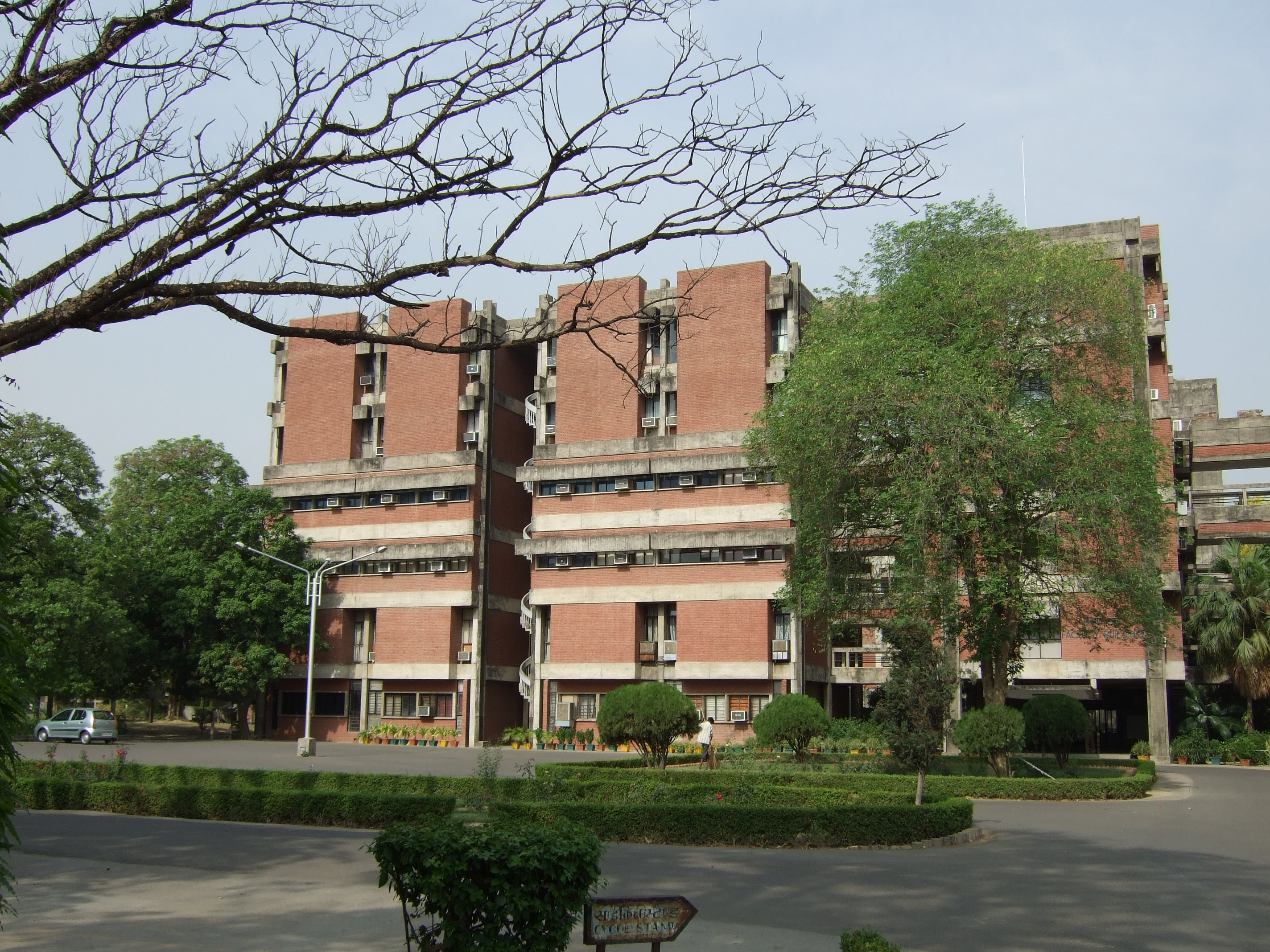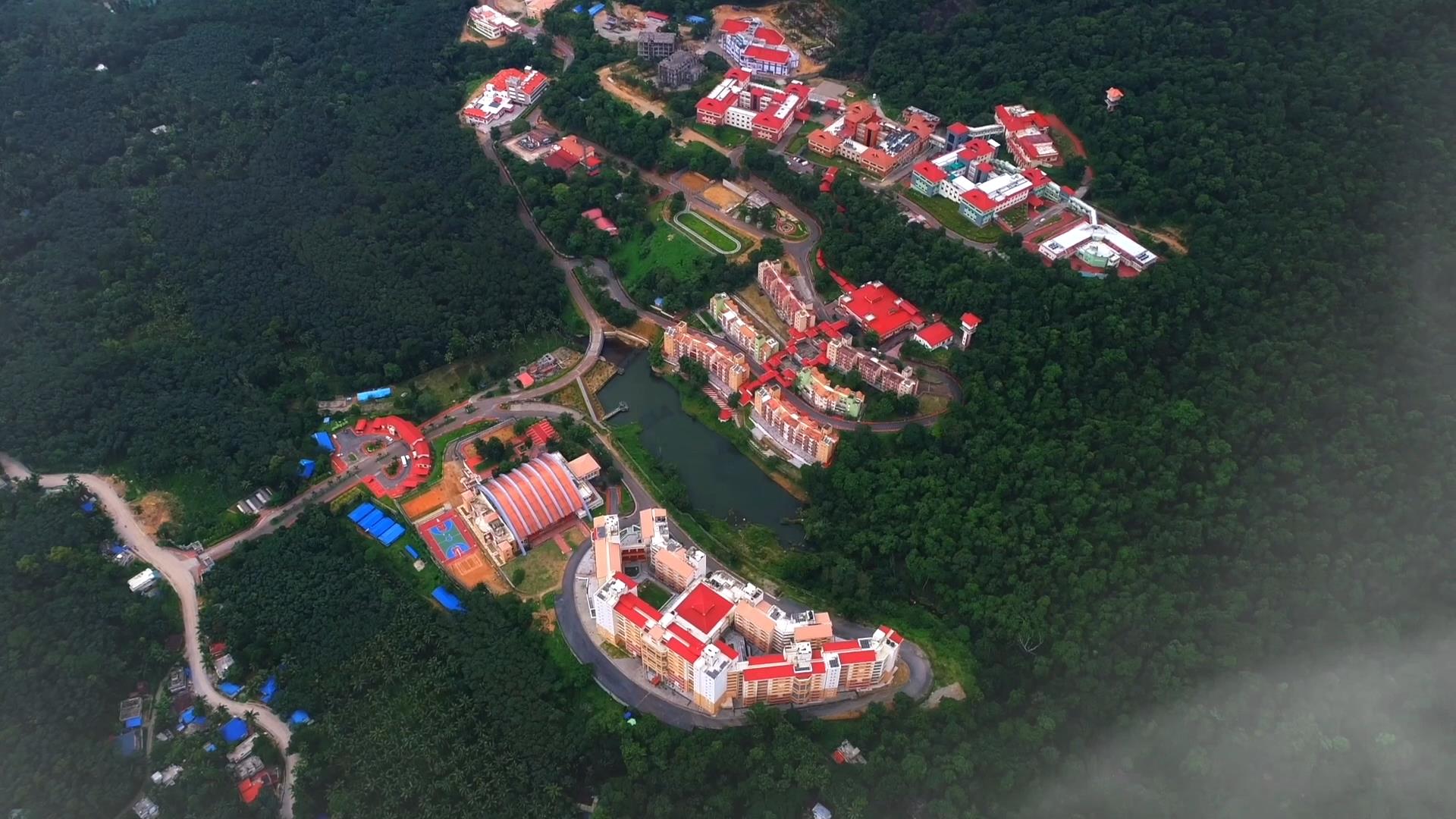|
Jarugu Narasimha Moorthy
Jarugu Narasimha Moorthy (born 1964) is an Indian organic photochemist and the director of Indian Institute of Science Education and Research, Thiruvananthapuram.He was a Dr. Jag Mohan Garg Chair Professor at the Indian Institute of Technology, Kanpur. He is known for his studies on photoreactivity and organization of organic molecules. and is an elected fellow of the Royal Society of Chemistry and the Indian Academy of Sciences. The Council of Scientific and Industrial Research, the apex agency of the Government of India for scientific research, awarded him the Shanti Swarup Bhatnagar Prize for Science and Technology, one of the highest Indian science awards, in 2008, for his contributions to chemical sciences. Biography J. N. Moorthy, Born on 1 July 1964 at B. Kothakota, a border town in Chittoor district of the south Indian state of Andhra Pradesh, graduated in chemistry from Bangalore University in 1985 and completed his master's degree from the same university in 1 ... [...More Info...] [...Related Items...] OR: [Wikipedia] [Google] [Baidu] |
Chittoor District
Chittoor district () is one of the eight districts in the Rayalaseema region of the Indian state of Andhra Pradesh. The district headquarters is located at Chittoor. It has a population of 4,170,468 according to 2011 census of India. It lies in the Poini River Valley of southernmost Andhra Pradesh along the Chennai–Bangalore section of Chennai-Mumbai highway. Chittoor district is a major market centre for mangoes, grains, sugarcane, and peanuts. Etymology The district derived its name from its headquarters Chittoor. History After the Indian independence in 1947, Chittoor became a part of the erstwhile Madras state. The modern Chittoor District was formerly Arcot District, which was established by the British in the 19th century had Chittoor as its headquarters. On 1 April 1911, district was split into Chittoor District and North Arcot Districts. Chittoor District was formed on 1 April 1911, taking Chittoor, Palamaneru, Tirupati, from the then North Arcot District of ... [...More Info...] [...Related Items...] OR: [Wikipedia] [Google] [Baidu] |
Jay Kochi
Jay Kazuo Kochi (高知 和夫, ''Kōchi Kazuo'',1927–2008) was an American physical organometallic chemist who held lectureship at Harvard University, and faculty positions at Case Institute of Technology, 1962-1969, (now Case Western Reserve University), Indiana University, 1969 to 1984, and the University of Houston, 1984 to 2008. Early life and education Kochi was born to Japanese immigrant parents on May 17, 1927, in Los Angeles, California, where he and his family had lived until he and his family were imprisoned at the Gila River War Relocation Center in 1942 just after the United States entered the Second World War and Executive Order 9066 was signed. After the war, Kochi and his family returned to California and Kochi later attended UCLA. Kochi received his Bachelor of Science degree from the University of California, Los Angeles in 1949 and his Ph.D. at Iowa State University in 1952 with George S. Hammond and Henry Gilman as advisors. He then spent short stints at H ... [...More Info...] [...Related Items...] OR: [Wikipedia] [Google] [Baidu] |
Alkylaromatic
The alkylbenzenes are derivatives of benzene, in which one or more hydrogen atoms are replaced by alkyl groups of different sizes. They are a subset of the aromatic hydrocarbons. The simplest member is toluene, in which a hydrogen atom of the benzene was replaced by a methyl group In organic chemistry, a methyl group is an alkyl derived from methane, containing one carbon atom bonded to three hydrogen atoms, having chemical formula . In formulas, the group is often abbreviated as Me. This hydrocarbon group occurs in many .... Literature * Allinger, Cava, de Jongh, Johnson, Lebel, Stevens: ''Organische Chemie'', 1. Auflage, Walter de Gruyter, Berlin 1980, , pp. 367–368, 560–562. * Streitwieser / Heathcock: ''Organische Chemie'', 1. Auflage, Verlag Chemie, Weinheim 1980, , pp. 1051, 1073–1080. * Beyer / Walter: ''Lehrbuch der Organischen Chemie'', 19. Auflage, S. Hirzel Verlag, Stuttgart 1981, , pp. 442–444. * Morrison / Boyd: ''Lehrbuch der Organischen ... [...More Info...] [...Related Items...] OR: [Wikipedia] [Google] [Baidu] |
University Grants Commission Of India
University Grants Commission (UGC) is a statutory body set up by the Department of Higher Education (India), Department of Higher Education, Ministry of Human Resource Development (India), Ministry of Education, Government of India in accordance to the UGC Act 1956 and is charged with coordination, determination and maintenance of standards of Higher education in India, higher education in India. It provides recognition to universities in India, and disbursements of funds to such recognized List of institutions of higher education in India, universities and colleges. The headquarters are in New Delhi, and it has six regional centres in Pune, Bhopal, Kolkata, Hyderabad, Guwahati and Bangalore. A proposal to replace it with another new regulatory body called HECI is under consideration by the Government of India. The UGC provides doctoral scholarships to all those who clear JRF in the National Eligibility Test. On an average, each year is spent on doctoral and post-doctoral fello ... [...More Info...] [...Related Items...] OR: [Wikipedia] [Google] [Baidu] |
Alexander Von Humboldt Foundation
The Alexander von Humboldt Foundation (german: Alexander von Humboldt-Stiftung) is a foundation established by the government of the Federal Republic of Germany and funded by the Federal Foreign Office, the Federal Ministry of Education and Research, the Federal Ministry for Economic Cooperation and Development as well as other national and international partners; it promotes international academic cooperation between excellent scientists and scholars from Germany and from abroad. Description Every year, the Foundation grants more than 700 competitive research fellowships and awards, primarily going to academics from natural sciences (mathematics included) and the humanities. It allows scientists and scholars from all over the world to come to Germany to work on a research project they have chosen themselves together with a host and collaborative partner. Additionally it funds German scholars' via the Feodor Lynen Fellowships to go anywhere in the world to work on a research proj ... [...More Info...] [...Related Items...] OR: [Wikipedia] [Google] [Baidu] |
Shanti Swarup Bhatnagar Prize For Science And Technology
The Shanti Swarup Bhatnagar Prize for Science and Technology (SSB) is a science award in India given annually by the Council of Scientific and Industrial Research (CSIR) for notable and outstanding research, Applied science, applied or Fundamental science, fundamental, in biology, chemistry, environmental science, engineering, mathematics, medicine, and physics. The prize recognizes outstanding Indian work (according to the view of Council of Scientific and Industrial Research, CSIR awarding committee) in science and technology. It is the most coveted award in Interdisciplinarity, multidisciplinary science in India. The award is named after the founder Director of the Council of Scientific & Industrial Research, Shanti Swaroop Bhatnagar, Shanti Swarup Bhatnagar. It was first awarded in 1958. Any citizen of India engaged in research in any field of science and technology up to the age of 45 years is eligible for the prize. The prize is awarded on the basis of contributions made thr ... [...More Info...] [...Related Items...] OR: [Wikipedia] [Google] [Baidu] |
Council Of Scientific And Industrial Research
The Council of Scientific and Industrial Research (IAST: ''vaigyanik tathā audyogik anusandhāna pariṣada''), abbreviated as CSIR, was established by the Government of India in September 1942 as an autonomous body that has emerged as the largest research and development organisation in India. CSIR is also among the world's largest publicly funded R&D organisation which is pioneering sustained contribution to S&T human resource development in the country. , it runs 37 laboratories/institutes, 39 outreach centres, 3 Innovation Centres and 5 units throughout the nation, with a collective staff of over 14,000, including a total of 4,600 scientists and 8,000 technical and support personnel. Although it is mainly funded by the Ministry of Science and Technology, it operates as an autonomous body through the Societies Registration Act, 1860. The research and development activities of CSIR include aerospace engineering, structural engineering, ocean sciences, life sciences and he ... [...More Info...] [...Related Items...] OR: [Wikipedia] [Google] [Baidu] |
Indian Academy Of Sciences
The Indian Academy of Sciences, Bangalore was founded by Indian Physicist and Nobel Laureate C. V. Raman, and was registered as a society on 24 April 1934. Inaugurated on 31 July 1934, it began with 65 founding fellows. The first general meeting of Fellows, held on the same day, elected Raman as president, and adopted the constitution of the Academy. Objectives The aims of the Academy are to: * Promote progress in pure and applied branches of science. * Encourage important research in various branches of science. * Represent the scientific work of India internationally. * Publish work relating to scientific research initiated by the Academy, Provincial Academies, Universities and Government Scientific Institutions. * Organise meetings of Committees and Conferences to discuss papers submitted to the Academy. * Advise Government and other bodies on scientific and other matters referred to the Academy. Publications The first issue of the Academy Proceedings appeared in two ... [...More Info...] [...Related Items...] OR: [Wikipedia] [Google] [Baidu] |
Royal Society Of Chemistry
The Royal Society of Chemistry (RSC) is a learned society (professional association) in the United Kingdom with the goal of "advancing the chemistry, chemical sciences". It was formed in 1980 from the amalgamation of the Chemical Society, the Royal Institute of Chemistry, the Faraday Society, and the Society for Analytical Chemistry with a new Royal Charter and the dual role of learned society and professional body. At its inception, the Society had a combined membership of 34,000 in the UK and a further 8,000 abroad. The headquarters of the Society are at Burlington House, Piccadilly, London. It also has offices in Thomas Graham House in Cambridge (named after Thomas Graham (chemist), Thomas Graham, the first president of the Chemical Society) where ''RSC Publishing'' is based. The Society has offices in the United States, on the campuses of The University of Pennsylvania and Drexel University, at the University City Science Center in Philadelphia, Pennsylvania, in both Beijing a ... [...More Info...] [...Related Items...] OR: [Wikipedia] [Google] [Baidu] |
Indian Institute Of Technology, Kanpur
The Indian Institute of Technology Kanpur (IIT Kanpur) Hindi: भारतीय प्रौद्योगिकी संस्थान कानपुर) is a public institute of technology located in Kanpur, Uttar Pradesh, India. It was declared to be an Institute of National Importance by the Government of India under the Institutes of Technology Act. The institution was established in 1959. As one of the first Indian Institutes of Technology, the institute was created with the assistance of a consortium of nine US research universities as part of the Kanpur Indo-American Programme (KIAP). History IIT Kanpur was established by an Act of Parliament in 1960 by the Government of India. The institute was started in December 1959 in a room in the canteen building of the Harcourt Butler Technological Institute at Agricultural Gardens in Kanpur. In 1963, the institute moved to its present location, on the Grand Trunk Road near Kalyanpur locality in Kanpur district. The camp ... [...More Info...] [...Related Items...] OR: [Wikipedia] [Google] [Baidu] |
Indian Institute Of Science Education And Research, Thiruvananthapuram
Indian Institute of Science Education and Research, Thiruvananthapuram (abbreviated as IISER Thiruvananthapuram or IISER-TVM) is an autonomous public university located in Thiruvananthapuram, India. The institute is one of the seven IISERs established by the Ministry of Human Resource Development, Government of India, to bridge the gap between research and basic sciences' education at the undergraduate level. The six other IISERs are IISER Bhopal, Indian Institute of Science Education and Research, Kolkata, IISER Kolkata, IISER Mohali, IISER Pune, IISER Tirupati and IISER Berhampur. All IISERs were declared as Institutes of National Importance by the Parliament of India in 2012 through the NIT Amendment Act. IISER Thiruvananthapuram is an autonomous institution that awards Bachelor of Science & Master of Science (BS-MS) dual-degrees, and Doctor of Philosophy (Ph.D.) degrees in Mathematics, Physics, Chemistry and Biology. IISER TVM is to offer five new BS-MS programmes (i2 Scie ... [...More Info...] [...Related Items...] OR: [Wikipedia] [Google] [Baidu] |






